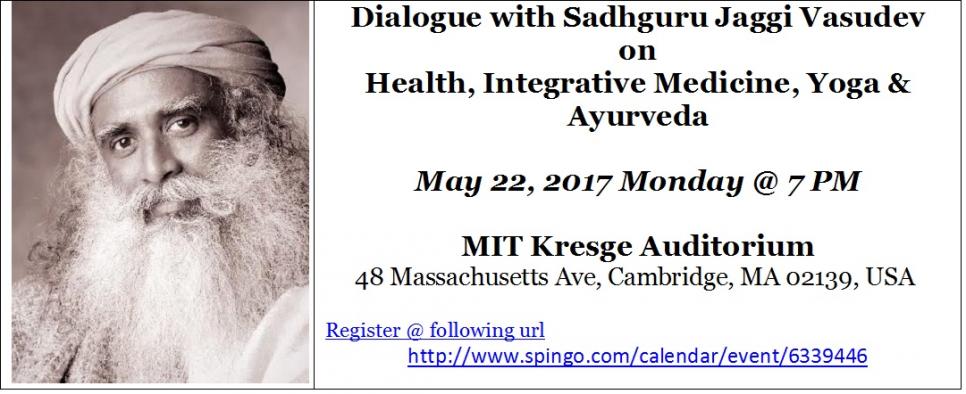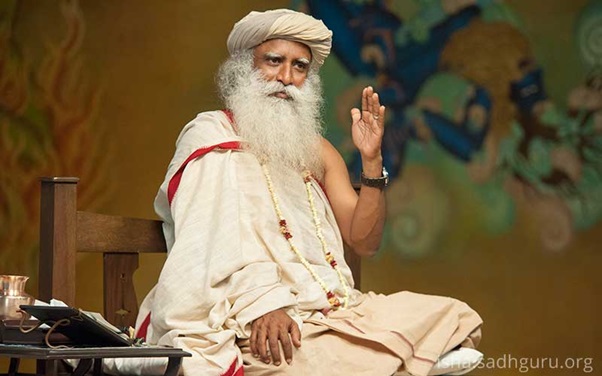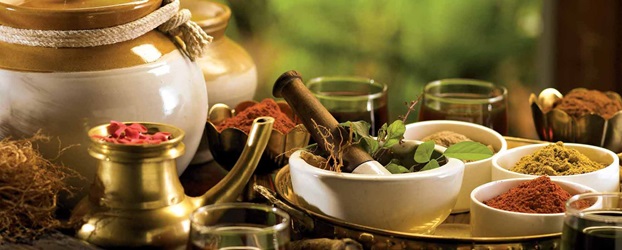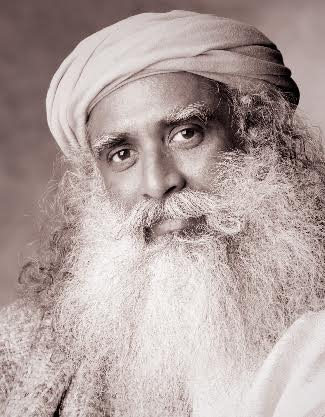Contribute
| Ayurveda, Siddha Or Allopathy - What To Choose When |
Press Release
05/04/2017

Choosing the right kind of treatment – Allopathy, Ayurveda or Siddha – can be a confusing affair. Sadhguru looks at the merits of each type and when they are most appropriate to use.

Medical systems such as Ayurveda and Siddha are considered alternative therapies in today’s world. Some are quick to dismiss such therapies while others swear by them. Choosing the right kind of treatment – Allopathy, Ayurveda or Siddha – can be a confusing affair. In this article, Sadhguru looks at the merits of each type and stresses on the importance of a holistic approach, rather than supporting any particular treatment as the best.

Allopathic Medicine
Sadhguru:
When we say health, disease, or ailment, there are two fundamental kinds. One kind of ailment comes to us from outside, an invasion of external organisms. It has to be dealt with in one way. We still find that the Allopathic system of medicine is the most effective way of handling infections, there’s no question about it. However, a majority of human ailments are self-generated. They come from within the system. For such chronic ailments, the Allopathic system of medicine has not proven to be too good. Allopathy can only manage the disease. It can never really uproot the disease because essentially, it is about symptomatic treatment.
Allopathy can only manage the disease
For most of the ailments that are chronic in nature, symptoms are like the proverbial tip of the iceberg. We are only treating the tip all the time. In fact, today it is an established form of treatment – if you get diabetes, hypertension, or asthma, doctors are talking to you about how to manage the ailment. They are never talking to you about how to get rid of it. But the manifestation of the disease in the form of a symptom is very minor. What is happening is at a much deeper level, which cannot be treated with external medicine.
If you are really in a state of emergency, going to an Ayurvedic doctor is not the best thing to do. You go to him only when you have time to recover. In an emergency, Allopathy has better systems than any other. But when your problems are mild and you know they are evolving, Ayurveda and other systems are very effective means of treatment.

Ayurveda
So what is so different about the medicines of an indigenous kind, which largely get labeled as Ayurveda? Ayurveda comes from a different dimension and understanding of life. A fundamental part of the Ayurvedic system is about an understanding that our bodies are an accumulation of what we gathered from the planet. The nature of the planet and of the Pancha Bhutas or the five elements that make the planet are very much manifest in this physical body. If you want to handle this body in the most effective and productive way, it is very important that everything you do about this body has a relationship with the planet.
Ayurveda is more disease-oriented, whereas Siddha is more health-oriented.
Ayurveda says that every root, every leaf, every tree bark found on this planet has medicinal value. We have learnt how to use only a few. The rest of them, we are yet to learn how to use. What this statement is trying to convey is, health is not something that falls upon you from the sky. Health is something that has to grow from within you, because the body is something that grows from within you. The input comes from the earth but it grows from within you. So, if you have a repair job to do, the best place to go is to the manufacturer, not to the local mechanic. This is the essence of Ayurveda.
In Ayurveda, we understand that if we go deep enough into the body, this body is not an integrated thing, it is a continuous process which involves the earth upon which you walk. If this relationship does not come through, these subtle systems of medicine which work from within, will fail to work. Without taking care of the whole system, just trying to do one aspect of it may not be very fruitful.
A holistic system does not mean just treating the body as a whole. A holistic system means treating life as a whole, which includes the planet, what we eat, what we breathe, what we drink – all of that. Without attending to all those things, the true benefit of Ayurveda will not be seen. If Ayurveda becomes a living reality in our lives and our societies, people can live like gods.

Siddha
Siddha or Siddhavaidya is unique to Southern India, fundamentally Tamil Nadu. This dimension of medicine was opened up by Agastya Muni. They say Adiyogi himself practiced it and Agastya brought it to the south. He created a very potent combination, some fantastic usage of material. It is unbelievable how Siddha works. In the Siddha system of medicine, the sages, realized beings and the Siddha doctors were not different. Always, the sages practiced a certain amount of medicine because human health is an essential part of going ahead.
Siddha is very different from Ayurveda and I would say it is much closer to the body’s energy system than Ayurveda is. Ayurveda is more disease-oriented, whereas Siddha is more health-oriented and simply about rejuvenation. So the variety of what is available in Siddha may not be as wide a range as in Ayurveda, because Ayurveda enters every disease. Siddha doesn’t enter the treatment of every disease. It is mainly about strengthening the inner sources of the body and activating the body in a certain way.
Siddha vaidya cannot happen without sadhana
Siddha is very different in the sense, though there are herbs, it is essentially elemental in nature. It comes more from the yogic science because the fundamental of yogic science is in Bhuta Shuddhi or in the cleansing of one’s elements. This is an evolution from the yogic science. Since it is elemental, you are dealing with the fundamental material which makes the body. You are not trying to infuse some other medicine into it. So it is not really a medicine as such.
Because of this, it needs less study but more internal mastery for the person who practices it, which is again a problem today. Siddha vaidya cannot happen without sadhana. Today they have set up colleges for siddha vaidya, but it will not work like that. “Siddha†means an established one or one who is firmly established within himself. At Isha, we have access to certain Siddha systems that are not normally available with other doctors who practice Siddha.
Isha Rejuvenation, located at the Isha Yoga Centers (T.N., U.S.A and Coimbatore, India), and Isha Arogya clinics, located in various cities in South India, are holistic health centers established by Sadhguru. Find out more about these centers from Sadhguru himself…
~~~~~~~~~~~~~~~~~~~~~~~~~~~~~~~
Sadhguru coming to MIT on May 22nd 2017
~~~~~~~~~~~~~~~~~~~~~~~~~~~~~~~

Dialogue with Sadhguru Jaggi Vasudev on
Health, Integrative Medicine, Yoga & Ayurveda
7:00 PM Monday May 22, 2017
MIT Kresge Auditorium, 48 Massachusetts Ave,
Cambridge, MA 02139, USA
Register At: http://www.spingo.com/calendar/event/6339446
You may also access this article through our web-site http://www.lokvani.com/








